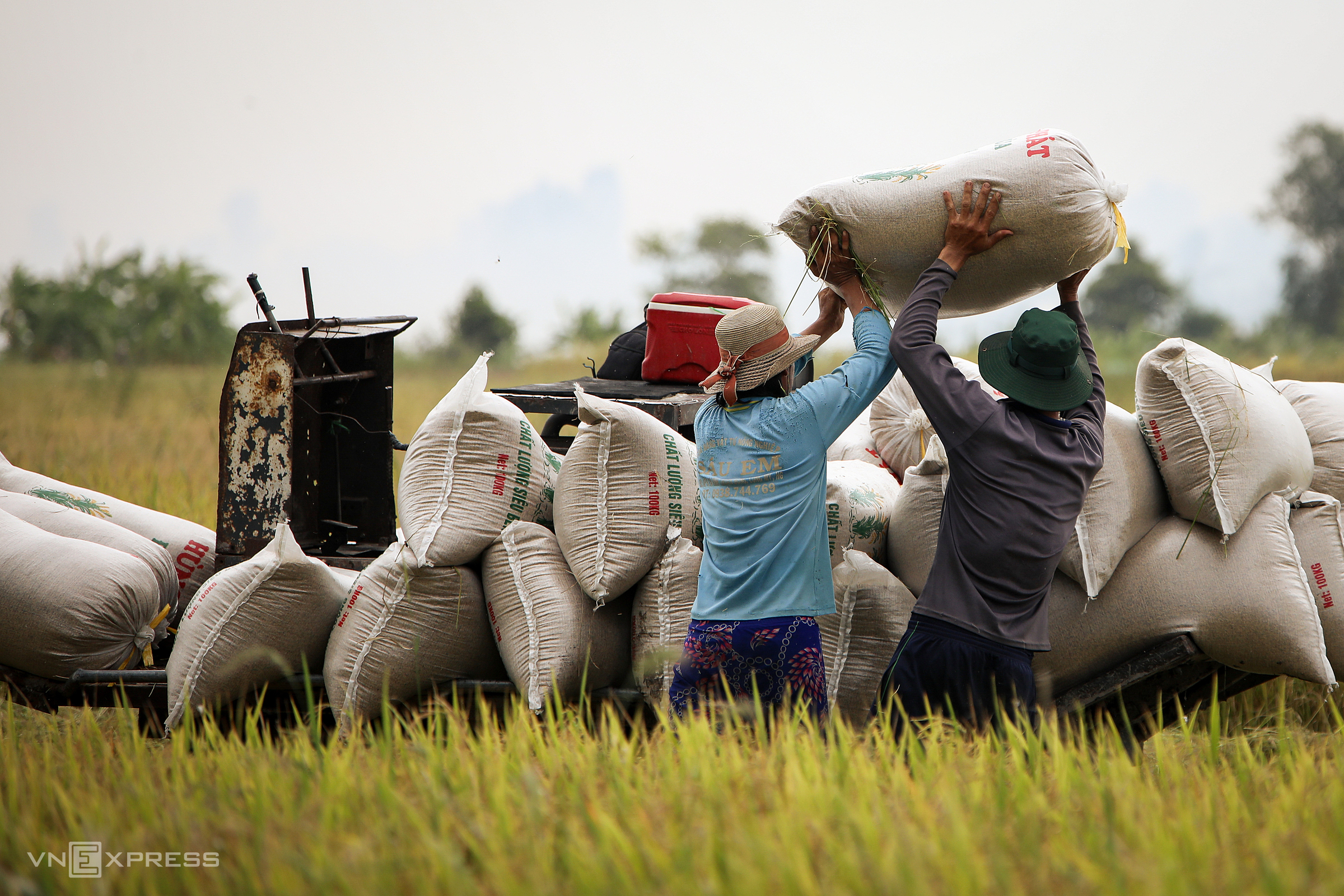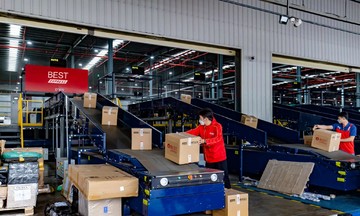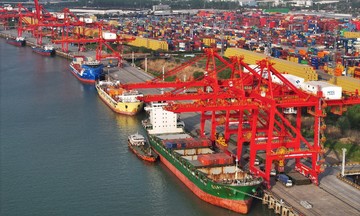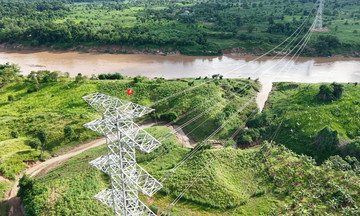The Philippines, Vietnam's largest rice market, temporarily halted imports for 60 days starting 1/9. This nation accounts for over 40% of Vietnam's rice exports, so the unexpected decision has led to caution in the Mekong Delta's purchasing activities. Many export companies are limiting their purchases and avoiding large inventories due to concerns about price drops and uncertain outlets.
In the international market, Vietnamese 5% broken rice is currently offered at 399 USD per ton, higher than the same type of rice from Thailand and India. This price difference increases competitive pressure, especially when demand decreases and buyers have more affordable options.
 |
Rice harvest in the Mekong Delta. Photo: Thuy Tien |
Rice harvest in the Mekong Delta. Photo: Thuy Tien
This pressure quickly reflected in the domestic market. Ms. Hang, a trader in An Giang, said that while she previously bought hundreds of tons daily, she now only buys small amounts to sell to domestic mills due to limited capital.
Not just traders, many businesses are also cautious. "Purchasing prices are still low, but we don't dare to stockpile. The company only buys enough to meet immediate business needs," shared Mr. Nguyen Chi Thanh, Director of the rice division at Angimex.
As of 8/9, raw and finished rice prices remained stable. IR 50404 was at 8,500-8,600 dong per kg, OM 5451 fluctuated between 7,700-7,900 dong, and OM 18 was around 9,600-9,700 dong. In retail markets, long-grain Thai fragrant rice, Huong Lai, and Dai Loan rice maintained their prices at 20,000-22,000 dong per kg.
Vinh Long, a province with many businesses exporting to the Philippines, is facing difficulties. Vinh Long currently has two rice exporting companies: Phuoc Thanh IV Production and Trading Co., Ltd. and Tra Vinh Food Company, both directly affected by the Philippines' decision. On 7/9, Vinh Long's Department of Industry and Trade issued an urgent dispatch to all businesses in the area, urging caution in response to the new situation.
The Department of Industry and Trade recommended that businesses proactively develop production and business plans and quickly expand into new markets to mitigate risks. They also urged businesses to actively purchase and store rice for farmers to stabilize output. The department pledged to closely monitor developments, assist with procedures, and connect businesses with new markets to minimize losses.
According to the Ministry of Industry and Trade, Vietnam exported 6.3 million tons of rice in the first eight months of the year, reaching 3.17 billion USD. Output increased slightly, but value decreased by nearly 18% due to falling average prices. The Philippines purchased 2.6 million tons, remaining the largest customer.
On 1/9, the Ministry of Industry and Trade issued a dispatch advising businesses to closely monitor the situation and avoid focusing on a single market. The Ministry also emphasized the need to expand into other markets such as China, Indonesia, Malaysia, Africa, and the Middle East; increase long-term contracts; promote official exports; and improve quality and traceability to meet the requirements of demanding markets.
Rice experts believe that while the higher price compared to Thailand and India reduces Vietnam's competitive advantage, it does not necessarily mean losing market share. Major customers still maintain orders due to Vietnam's reputation for quality and consistent supply. "Opportunities may arise in Africa and the Middle East as supply from Thailand and India faces challenges due to weather and policies," noted a commodity expert.
Despite the shock from the Philippines, the Vietnamese rice industry is still expected to export over 8 million tons in 2025, maintaining its position as the world's second-largest exporter. Businesses hope prices will recover by the end of the year when global demand rebounds and the Philippines resumes imports.
Thi Ha












